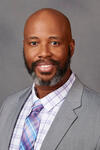In The News: School of Public Policy and Leadership

A group of local leaders is set to host a Know Your Rights Town Hall on Thursday, April 22, at Clark County Chambers, 500 Grand Central Parkway, providing details on restoration of voting rights, rights if stopped by law enforcement, and immigration rights.
Mass transit along Charleston Boulevard and light rail on Maryland Parkway are a winning pair in Las Vegas.

The plan to build a mass-transit system along Charleston Boulevard is a good idea, but Las Vegas’ transportation challenges need to be addressed on multiple fronts, an urban development expert says.
As the Los Angeles Unified School District prepares to reopen elementary schools for the first time in 13 months, recently released court documents show that while the district pushed for more instructional time for students earlier this year, the union successfully bargained for a reduced teacher workday—and a lot more of what it wanted.

Southern Nevada nonprofits have been on the front lines over the last 12 months, providing much-needed resources and services, while highlighting the importance of their role in the community.

The panel series, “We Need To Talk: Conversations on Racism for a More Resilient Las Vegas,” will stream the sixth episode on Feb. 18 at 5:30 p.m.

Since at least the 2000 presidential election, pundits, scholars, and the general public have conceptualized the country’s partisan landscape using the blue states, red states, and swing states framework. But despite its ubiquity, this structure ignores how intrastate regional tensions and political competition imbue the divisions between red and blue America. Differences within states also anchor the long-standing urban-rural divide—a salient feature of American politics since the country’s founding.

Since at least the 2000 presidential election, pundits, scholars, and the general public have conceptualized the country’s partisan landscape using the blue states, red states, and swing states framework. But despite its ubiquity, this structure ignores how intrastate regional tensions and political competition imbue the divisions between red and blue America. Differences within states also anchor the long-standing urban-rural divide—a salient feature of American politics since the country’s founding.

In 2016, nearly all major metropolitan areas voted for Hillary Clinton, including the counties that generate nearly two-thirds of the U.S. economy. In 2018, voters in the nation’s big blue metros returned Democrats to the majority in the House and drove the party’s senate pick-ups in Arizona and Nevada. They also secured gubernatorial victories in several other states. Suburbs in particular played an outsized role in the blue shift.

In 2016, nearly all major metropolitan areas voted for Hillary Clinton, including the counties that generate nearly two-thirds of the U.S. economy. In 2018, voters in the nation’s big blue metros returned Democrats to the majority in the House and drove the party’s senate pick-ups in Arizona and Nevada. They also secured gubernatorial victories in several other states. Suburbs in particular played an outsized role in the blue shift.

For generations, redlining was used to designate neighborhoods—typically in urban areas with high concentrations of minority residents—as places banks should avoid offering home mortgages. The term originates from Federal Housing Administration maps developed in the 1930s where “red” labeled high-risk lending zones. To be “redlined” meant that households were structurally denied home loans and lost the opportunity to build wealth.

For generations, redlining was used to designate neighborhoods—typically in urban areas with high concentrations of minority residents—as places banks should avoid offering home mortgages. The term originates from Federal Housing Administration maps developed in the 1930s where “red” labeled high-risk lending zones. To be “redlined” meant that households were structurally denied home loans and lost the opportunity to build wealth.

